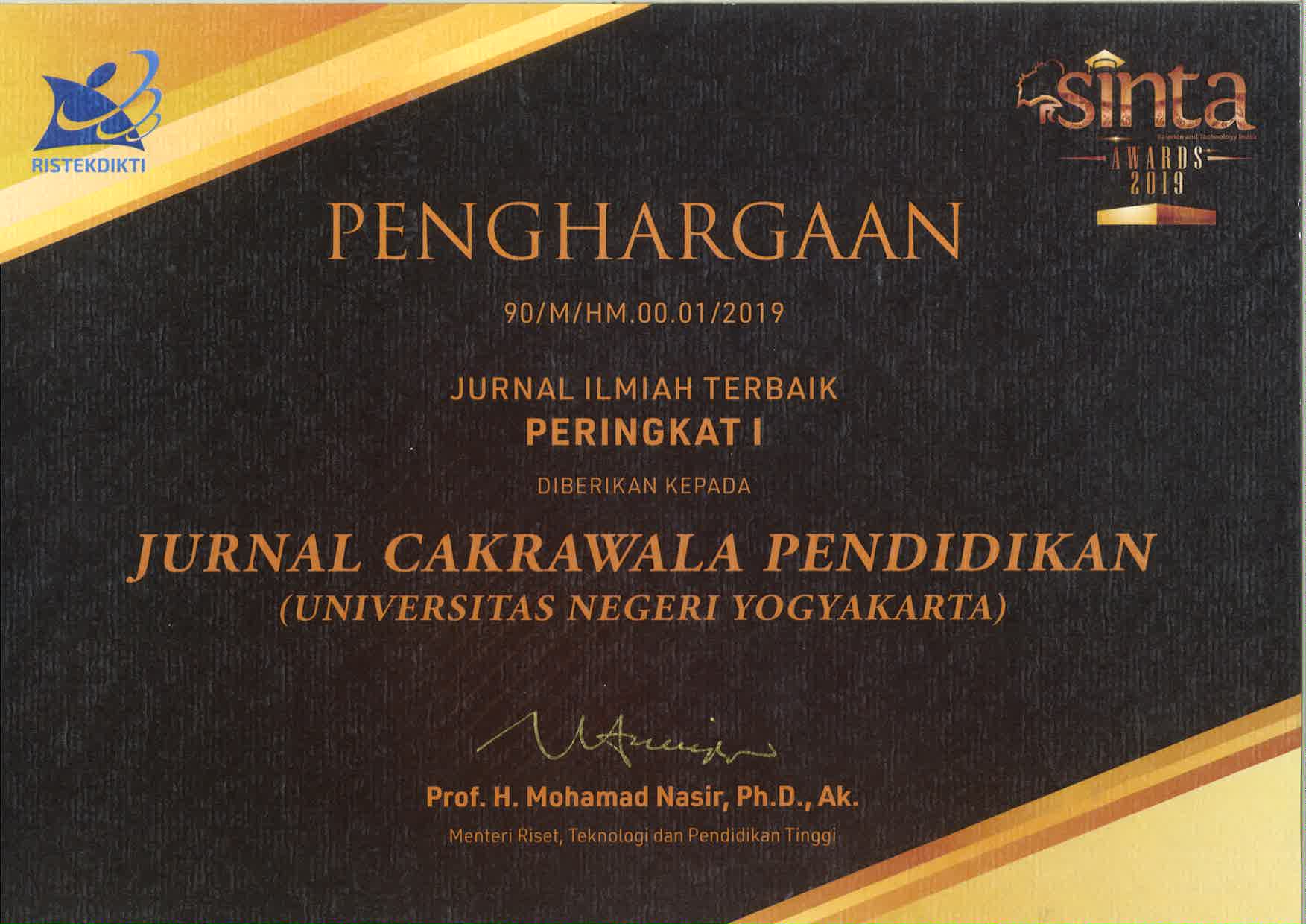Applying the Rasch Rating Scale Model (RSM) to investigate the rating scales function in survey research instrument
Downloads
Downloads
Abd-El-Fattah, S. M. (2015). Rasch Rating Scale Analysis of the Arabic Version of the Physical Activity Self-Efficacy Scale for Adolescents: A Social Cognitive Perspective. Psychology, 06(16), 2161–2180. https://doi.org/10.4236/psych.2015.616213
Andrich, D. (1978). A rating formulation for ordered response categories. Psychometrika, 43(4), 561–573. https://doi.org/10.1007/BF02293814
Andrich, D. (1996). Measurement Criteria for Choosing among Models with Graded Responses. In Categorical Variables in Developmental Research. https://doi.org/10.1016/b978-012724965-0/50004-3
Andrich, D. (2011). Rating scales and Rasch measurement. Expert Review of Pharmacoeconomics & Outcomes Research, 11(5), 571–585. https://doi.org/10.1586/erp.11.59
Bond, T., & Fox, C. M. (2015). Applying the Rasch Model: Fundamental Measurement in the Human Sciences, Third Edition. Routledge.
Boone, W. J. (2020). Rasch Basics for the Novice. In M. S. Khine (Ed.), Rasch Measurement (pp. 9–30). Springer Singapore. https://doi.org/10.1007/978-981-15-1800-3_2
Boone, W. J., Staver, J. R., & Yale, M. S. (2014). Rasch analysis in the human sciences. Springer.
Bradley, K. D., Peabody, M. R., Akers, K. S., & Knutson, N. M. (2015). Rating Scales in Survey Research: Using the Rasch model to illustrate the middle category measurement flaw. Survey Practice, 8(1), 1–12. https://doi.org/10.29115/sp-2015-0001
Dimitrov, D. M. (2014). Statistical Methods for Validation of Assessment Scale Data in Counseling and Related Fields. Wiley.
DiStefano, C., & Jiang, N. (2020). Applying the Rasch Rating Scale Method to Questionnaire Data. In M. S. Khine (Ed.), Rasch Measurement (pp. 31–46). Springer Singapore. https://doi.org/10.1007/978-981-15-1800-3_3
Engelhard, G., & Wind, S. A. (2017). Invariant Measurement with Raters and Rating Scales. In Invariant Measurement with Raters and Rating Scales. https://doi.org/10.4324/9781315766829-14
Fink, A. (2003). How to Ask Survey Questions (2nd ed.). SAGE Publications, Inc.
Finn, J. A., Ben-Porath, Y. S., & Tellegen, A. (2015). Dichotomous versus polytomous response options in psychopathology assessment: Method or meaningful variance? Psychological Assessment, 27(1), 184–193. https://doi.org/10.1037/pas0000044
Fowler, F. J. (2013). Survey Research Methods. SAGE Publications.
Hales, S. (1986). Rethinking the Business of Psychology. Journal for the Theory of Social Behaviour, 16(1), 57–76. https://doi.org/10.1111/j.1468-5914.1986.tb00066.x
Hilbert, S., Kí¼chenhoff, H., Sarubin, N., Nakagawa, T. T., & Bí¼hner, M. (2016). The influence of the response format in a personality questionnaire: An analysis of a dichotomous, a likert-type, and a visual analogue scale. TPM - Testing, Psychometrics, Methodology in Applied Psychology, 23(1), 3–24. https://doi.org/10.4473/TPM23.1.1
Lei Chang. (1994). A Psychometric Evaluation of 4-Point and 6-Point Likert-Type Scales in Relation to Reliability and Validity. Applied Psychological Measurement, 18(3), 205–215. https://doi.org/10.1177/014662169401800302
Likert, R. (1932). A Technique for the Measurement of Attitudes (Issue nos. 136-165). publisher not identified.
Linacre, J. M. (2000). Comparing and Choosing between "Partial Credit Models" (PCM) and "Rating Scale Models" (RSM). Rasch Measurement Transactions, 14(3), 768.
Linacre, J. M. (2002). Optimizing Rating Scale Category Effectiveness. Journal of Applied Measurement, 3, 85–106.
Linacre, J. M. (2019). A User's Guide to WINSTEPS MINITEP, Rasch-Model Computer Programs, Program Manual 4.4.7. winsteps.com. https://doi.org/ISBN 0-941938-03-4
Merbitz, C., Morris, J., & Grip, J. C. (1989). Ordinal scales and foundations of misinference. Archives of Physical Medicine and Rehabilitation, 70(4), 308–312.
Mokshein, S., Ishak, H., & Ahmad, H. (2019). The Use Of Rasch Measurement Model In English Testing. Jurnal Cakrawala Pendidikan, 38(1), 16-32. doi:https://doi.org/10.21831/cp.v38i1.22750
Nardi, P. M. (2015). Doing Survey Research. Taylor & Francis.
Nunnally, J. C. (1967). Psychometric theory. McGraw-Hill.
Oxford Dictionary. (2020). https://www.oxfordlearnersdictionaries.com/definition/english/less_1?q=less
Preston, C. C., & Colman, A. M. (2000). Optimal number of response categories in rating scales: reliability, validity, discriminating power, and respondent preferences. Acta Psychologica, 104(1), 1–15. https://doi.org/10.1016/S0001-6918(99)00050-5
Rasch, G. (1960). Probabilistic Models for Some Intelligence and Attainment Tests. Danmarks Paedagogiske Institut.
Smith, A. B., Rush, R., Fallowfield, L. J., Velikova, G., & Sharpe, M. (2008). Rasch fit statistics and sample size considerations for polytomous data. BMC Medical Research Methodology, 8(1), 33. https://doi.org/10.1186/1471-2288-8-33
Smith, R. M. (1996). Polytomous mean-square fit statistics. Rasch Measurement Transactions, 10(3), 516–517.
Smith, E. V, Wakely, M. B., De Kruif, R. E. L., & Swartz, C. W. (2003). Optimizing Rating Scales for Self-Efficacy (and Other) Research. Educational and Psychological Measurement, 63(3), 369–391. https://doi.org/10.1177/0013164403251320
Stone, M., & Wright, B. D. (1994). Maximizing rating scale information. Rasch Measurement Transactions, 8(3), 386.
Weng, L. J. (2004). Impact of the number of response categories and anchor labels on coefficient alpha and test-retest reliability. Educational and Psychological Measurement, 64(6), 956–972. https://doi.org/10.1177/0013164404268674
Wright, B. D., & Linacre, J. M. (1989). Observations are always ordinal; measurements, however, must be interval. Archives of Physical Medicine and Rehabilitation, 70(12), 857–860.
Wright, B. D., & Masters, G. N. (1982). Rating scale analysis. MESA press.
Wright, B. D., & Panchapakesan, N. (1969). A Procedure for Sample-Free Item Analysis. Educational and Psychological Measurement, 29(1), 23–48. https://doi.org/10.1177/001316446902900102
Zhu, W., Updyke, W. F., & Lewandowski, C. (1997). Post-hoc Rasch analysis of optimal categorization of an ordered-response scale. Journal of Outcome Measurement, 1(4), 286–304.
Jurnal Cakrawala Pendidikan, Jurnal Ilmiah Pendidikan, with ISSN: 0216-1370, is published by the Institute of Education Development and Quality Assurance (LPPMP UNY). Cakrawala Pendidikan has been recently has been re-accredited by Indonesian Ministry of Education and Culture decision Number 230/E/KPT/2022 which is valid for five years since enacted on 30 December 2022.




























